Sunday at Bill's Mother's: 11th May 2025
Highland flames. Redcar revival. And a (very) new Secret Seating.
Morning. I learned this week that until the 1700s we lived in a wild world. Until the industrial revolution, most of the planet was governed by ancient relationships between its living creatures, its geology and its weather.
But after we found new uses for oil and coal and commerce, wildness retreated until some say nowadays, in the Anthropocene age of human dominance of the environment, there’s nothing truly wild left.
I’ll have more on these ideas in the next week or two, while today I’m looking to our wild(ish) west. What’s made our moors the way they are just now, ready to burn and blow soot and carbon across the sky at the drop of a hot supermarket barbecue?
There’s news of heroic volunteers who’ve been hard at work cleaning up a fly-tipped watercourse running off those dry moors. And, the latest Secret Seating awaits.
You know the deal by now: try us free for a few weeks to see if you like what you read, and if you do, a pocket money subscription helps pay the bills so we can keep going, and growing.
If you can afford £4 a month (or less), it gives you access to all of every post, you can sift through our fairly interesting archive of over 230 features, and it helps us publish this kind of thing to more and more readers across the city. Thanks.
Restore the Moors
We like to think of our windy moorland as a wild untamed landscape. We take late summer visitors from less fortunate cities to marvel at the purple heather on our western borders.
In reality, our moors are struggling remnants of a Victorian fashion statement.
This spring, the dangers of this landscape are clear. We’ve already seen several big fires in the Peak District, and if and when the rains finally come, the bone dry ground may lead to massive erosion and flooding.
I’ve learned the story of our moors after many years of walking and talking through the bristly heather with countryside campaigners and conservationists. Many of those working on our uplands are reluctant to go on record about the background to the denuded land under our fell shoes and walking boots, as they still have to maintain cordial relations with supporters of blasting fat birds out of the sky with shotguns.
But moorland campaigners are clear about the damage caused by driven grouse shooting. Without recent human interference, the moors above Sheffield would be wet, with pools of water and a mixture of green bushes, hardy grasses, white flowers in the summer and splashes of purple heather in the early autumn.
There’d be Hen Harriers dancing in the sky, a few wily Red Grouse hiding in the undergrowth, snakes in the grass, and everywhere biodiversity would be buzzing in the face of any human intrepid enough to wade through the bogs.
Instead, we have wide skies and increasingly dry ground. Why? Overgrazing, first of all. Landowners drained the land centuries ago so they could fill the moors with sheep for the wool industry, without fear of the animals getting lost in a bog or succumbing to foot rot. In turn, it seems intensive sheep grazing may have increased the moorland stock of Molinia, or purple moor grass, the tufty pale grass we see all over our dry moors just now.
And then came the fashion for driven grouse shooting, when wealthy landowners saw the profit and status enhancement of inviting their friends and members of other monied classes to have a fun weekend drinking and eating and shooting.
It soon became clear that those grouse targets would have to be fiercely bred and fattened, and then driven in huge numbers over the heads of the shooting party, because most of them were terrible shots.
“It’s a lazy sport,” I heard from one observer. “You have to have enough grouse so any idiot can hit something.”
I’m told that skilled hunters from Europe and America shake their heads at the naffness of the shooting practices of England and Scotland. How Victorian driven grouse shooting has held the excitement of wealthy Britons for two hundred years is a mystery to them.
And while shooting fashions developed in the nineteenth century, the acid rain and poisonous chemicals of the industrial revolution fell, and killed plants like sphagnum mosses, which for thousands of years had built peat layers on the moors, and kept the ground damp and thriving.
There’s a lot of money and influence in driven grouse shooting, and practitioners would have us believe its landscape is both a national heritage and somehow the natural state of things, rather than a two century long aberration that’s still hanging on to thousands of acres of our countryside.
It seems to many people in the conservation world that the driven shooting lobby is in the final desperate stages of trying to defend itself in a changing world, where we need to preserve our peat and moorland wildlife more than ever.
The planned duoculture landscape (promoting grouse and its primary food crop, young heather) actually seems to suit a few other creatures too, like Curlews, Lapwings and hares, and the shooting lobbyists will show you scientific papers they’ve paid for, with all the details about these favoured creatures.
Purveyors of the archaic practice of heather burning (to fatten young grouse by growing lots of young heather shoots) also have research to show you how careful ‘cool burning’ the top layer of heather can provide fire breaks to slow wildfires.
What isn’t usually mentioned is that many wildfires (over 50% of those with a known cause, according to research for the Scottish government) may actually be caused by planned burning that flamed out of control.
Here, burning and shooting continues on some of our north western moorland, but what of the rewilding moors managed by more enlightened organisations further south and west? Gully blocking, pond building and sphagnum planting are all helping to green and dampen the former grouse shooting and sheep-gnawed landscape around Kinder and the Eastern Moors, and native trees are being planted in the gullies running off the highlands. But I’m told it takes several decades to return a former grouse moor to a fully functioning blanket bog.
And that blanket bog is what the country needs to hold peat and the carbon it contains in the ground, in a climate increasingly prone to wildfires and flooding.
A more natural moorland, with plenty of sphagnum growing, will hold water on the moors, slow the flow from flood events, and actually sequester and store carbon as the mosses live and die, laying down more peat and carbon into the soil. And wet moors build up a range of plants that attract insects and birds and bats and biodiversity.
It’s worth joining the government’s consultation on all this before the 25th of May deadline. A proposed change to burning legislation offers the chance to tell our leaders what you think. Most campaigners say any burning is damaging, and changing from a ban on over 40cm of peat depth to 30cm may be a baby step in the right direction, but really an outright ban on burning is supported by the science, and the public. Or even better, a ban on the archaic pastime of driven grouse shooting.
If you don’t go along with the fire and Curlew benefits of their artificial landscape, grouse moor lobbyists counter with the financial needs of a hard pressed rural economy currently assisted in large measure by aspirational folk from the city (or abroad) with money to burn.
But wealthy people with an interest in the countryside can be guided towards other ways to spend their disposable income, campaigners and conservationists tell me. Wildlife tourism, photography and birdwatching workshops, for example, or even shifting to a more measured and skilled practice of hunting by sharing the landscape with fellow predators as you track down your prey, as they do in many other parts of the world.
The climate this spring, and the fires we’ve already seen, show us why this is important to all of us, not just people who spend their leisure time marvelling at our moorland.
I’m told the evidence on the accelerating changes to our weather means we should be restoring our moorland rather than burning it, and the sooner its wetter the better, given the thirty or more years it takes for proper blanket bog to take hold again after years of heather and purple moor grass.
Looking out over the brown heather, and tinder dry Molinia grass sitting on the hills above us right now, the result of a dying aristocratic fashion trying to hang onto a drying landscape by throwing money at it, one of my friends from the conservation world put it all very simply. “It’s time to move on.”
Clean Up Complete
650 sacks of waste, three dustbins, 30 planks and sheets of wood, one washing machine drum, three gas canisters, a shopping trolley, three cuddly toys and a kitchen sink.
Andy Buck from the Sheaf and Porter Rivers Trust (SPRT) sent me the list above after the colossal clean up of the Redcar Brook near Ringinglow last weekend.
46 volunteers and five staff from the River Stewardship Company climbed down into the brook running off the Houndkirk Moor between Sheephill and Hathersage Roads and fished out over two years worth of fly-tipped rubbish, much of it dumped waste from the city’s illegal cannabis industry. 4.7 tonnes in total, now taken away for disposal by the council.
“It was pretty dirty work,” says Andy. “People were emerging from the task in a filthy state. The rubbish had accumulated over several years, and some of it was embedded into the brook and around the trees, all the way down to Hathersage Road. It seemed extraordinary it had spread so far downstream.”
Local residents along with volunteers from SPRT, Sheffield University Conservation Volunteers and Sheffield Litter Pickers began work in the morning and by lunchtime the teams of public-spirited muck gatherers had cracked the problem, says Andy.
“In some places, the brook seemed to go back to running as it should naturally before our very eyes, which had probably not been possible for years.”
The Dore Village Society helped fund a portaloo, and baking volunteers brought along buns and cakes for the day’s workers.
“There was a real spirit of friendship and cooperation,” says Andy. “But I had mixed emotions. The day confirmed my outrage about the terrrible environmental crime of flytipping, contrasting with the triumph of over 50 people, most of them volunteers, getting stuck in and resolving the problem.”
We’ve covered this story before, including warnings from the Environment Agency about how the particular pollutants from cannabis waste can damage wildlife and biodiversity.
Sheffield Bird Study Group members surveyed the site before the clean up, so volunteers didn’t disturb nests, and I’ll be returning to the restored upland stream soon to learn what kind of creatures might find an unpolluted home there now.
The new 1.8 metre-high fence erected by the council above the brook on Sheephill Road should deter flytipping in future. Up until last month, flytippers could turn up in the dead of night and empty a van full of stinking rubbish over a wall into the brook below, Andy tells me.
His conclusion is that sadly, the new fence (and the other ‘target hardening’ measures at other flytipping sites across the city reported here earlier) will likely just divert the problem elsewhere.
He says the city has established procedures for the disposal of domestic and commercial waste, but safe disposal of harmful rubbish from an illegal industry is hard to fit into those systems.
He welcomes the recent attack on flytipping from the Prime Minister in a social media warning to flytippers that drones will be deployed to track their vehicle. “And then we’ll crush it.”
“Every right thinking person is furious about flytipping. But there’s no simple solution,” says Andy.
Meanwhile, thousands of volunteers around the city will continue to pick up the polluting pieces. And Redcar Brook might have the chance to become a haven for wildlife once again.
To check more river and other clean ups around Sheffield, join Sheffield Litter Pickers or the Sheaf and Porter Rivers Trust.
More What’s On Out There (from Sunday 11th May)
A tiny selection from our new (and regularly updated) What’s On Out There news and listings post for May and beyond.
Sun 11th - Sheffield CTC Cycle Ride - Matlock
Mon 12th - Friends of Whirlow Brook Park volunteer session
Tues 13th - Friends of Ecclesall Woods volunteer & footpath repair session
Weds 14th - Graves Park Climate Resilience Project: Spring flowers walk
Thurs 15th - CycleBoost Learn to Ride & Cycle Confidence sessions - Greenhill Park (Booking required)
Fri 16th - SRWT Volunteering - Carr House Meadows
Sat 17th - Cycle Sheffield Big Ride with Kidical Mass cycle ride
Secret Seating 13
Gold medal to a very specific location for Secret Seating 12 to Chris, who gave us grid ref. SK 290 810. That’s the kind of detail needed for the top accolade, Secret Seating fans. (What3Words is also ok, or a well-honed description of local landmarks).
Today we have a new challenge: a very new seating opportunity in a little-known but very wonderful stretch of hilly woodland. I hear this pristine bench only appeared a few weeks ago. But where?
Start your free trial, or upgrade to full supporter for the cost of a Millhouses flat white.

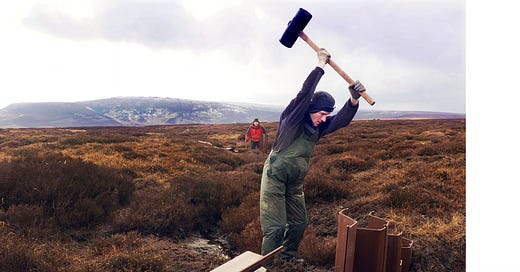



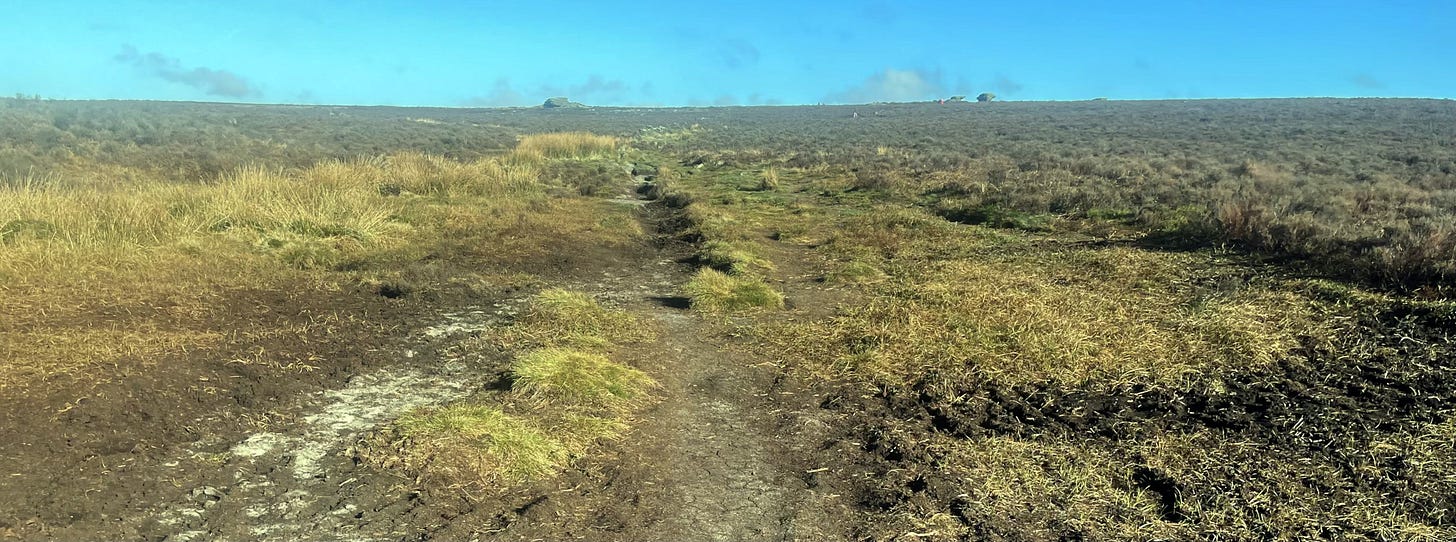
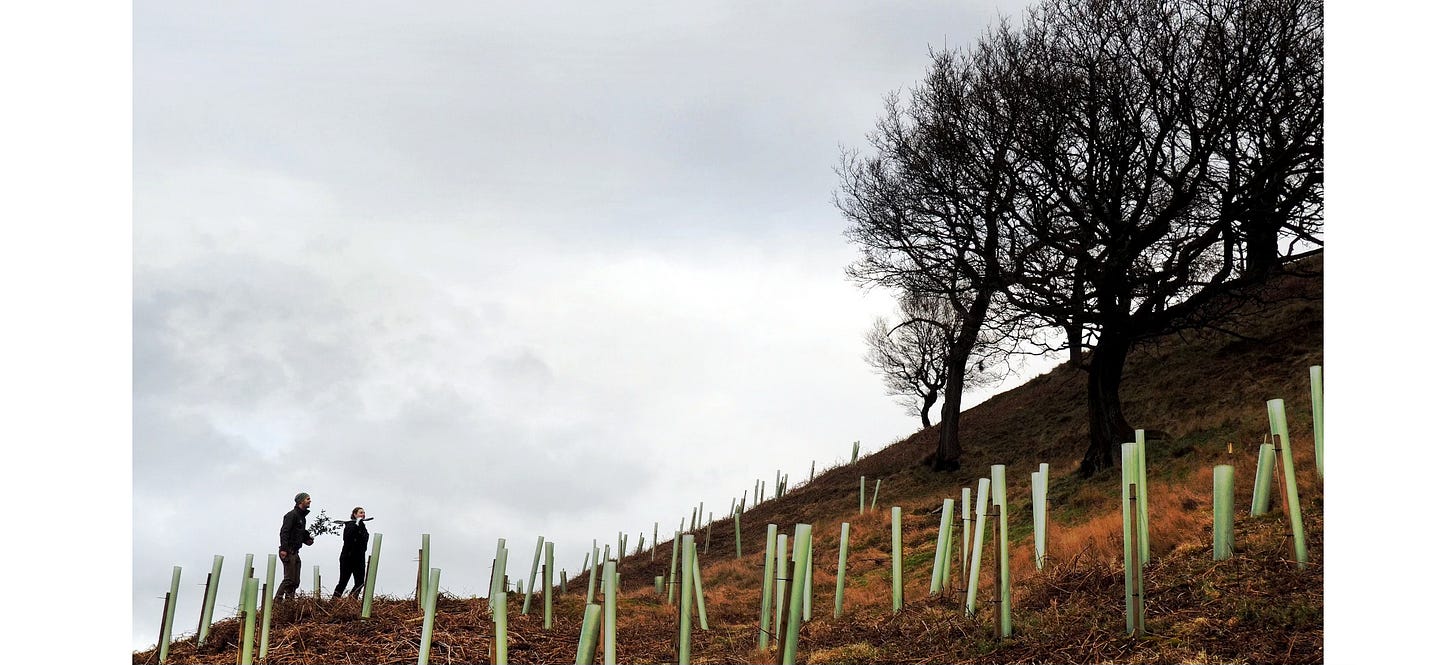

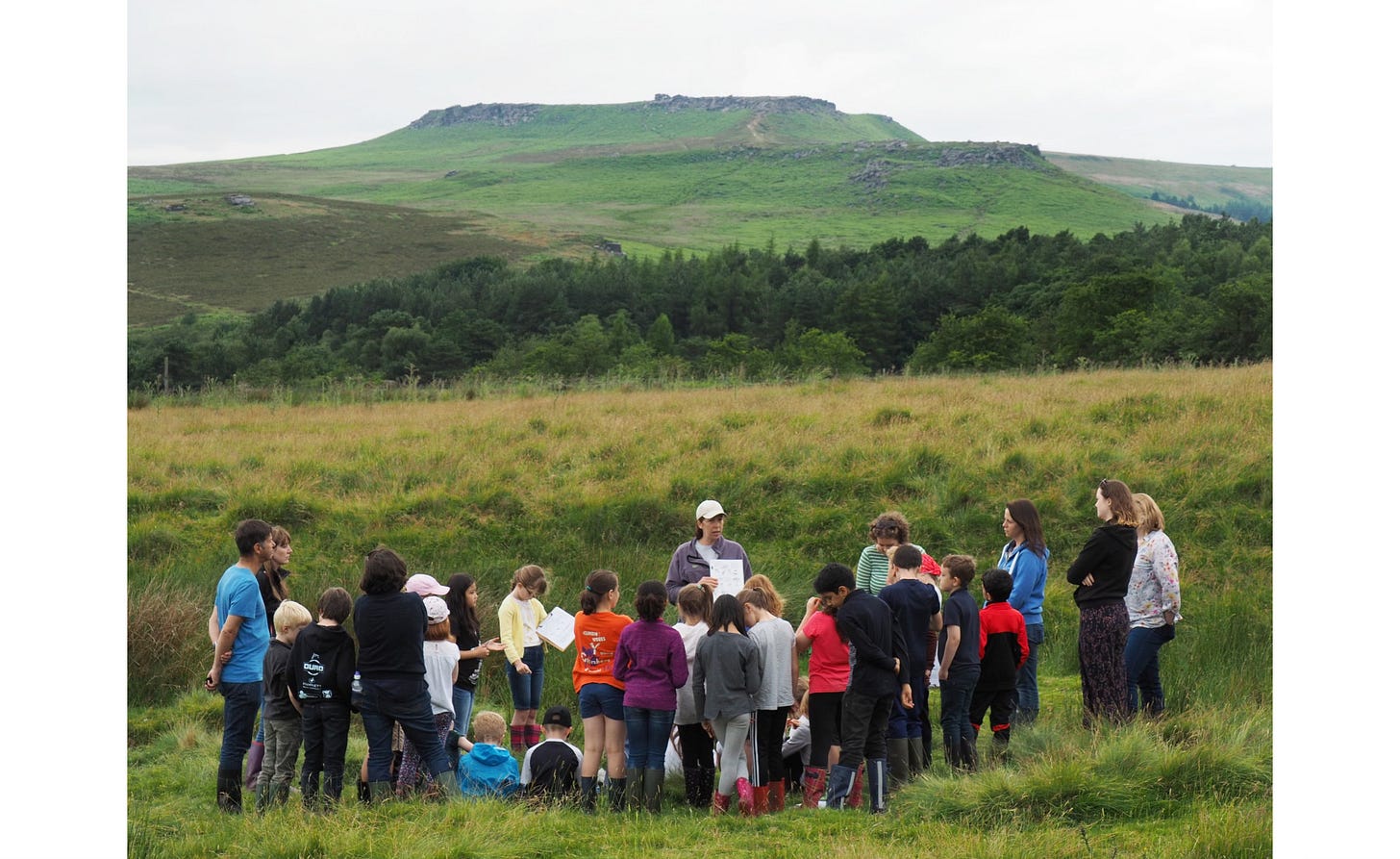

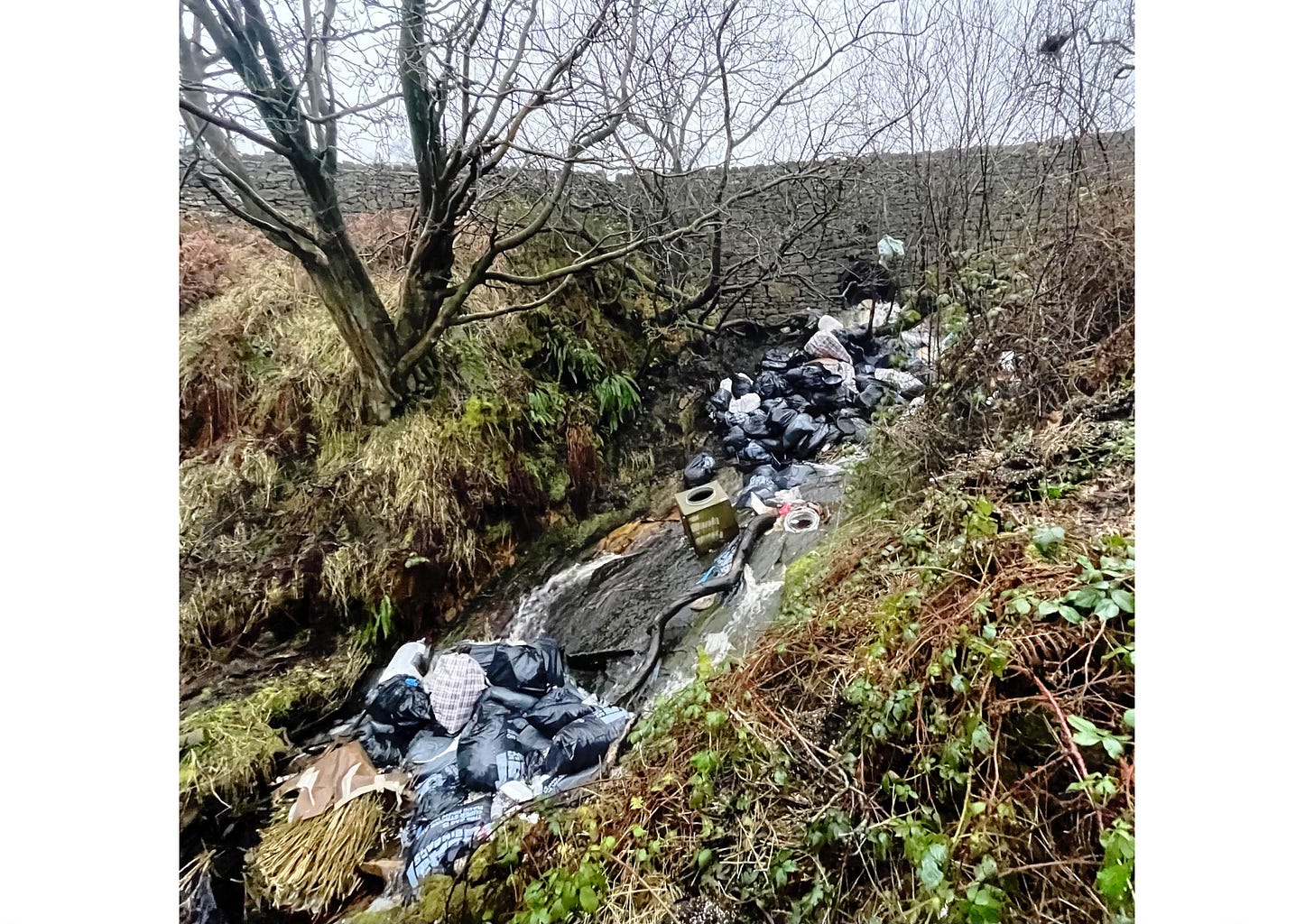
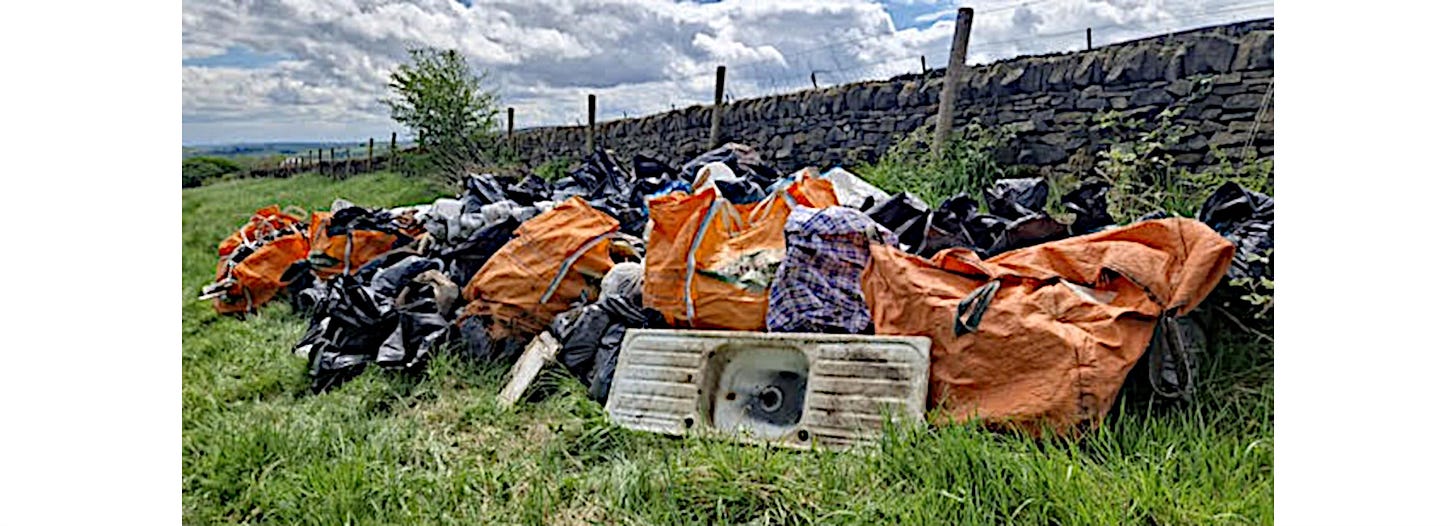

This post reminds me of the past wild environments and how they have changed over time, especially in the management of highlands and wilderness. We often see concepts like “natural restoration” on social media, but rarely do we get the chance to truly understand the complexities behind them. For example, how wilderness areas were altered by overgrazing and reckless development, leading to the landscapes we see today. The traditional hunting activities from the Victorian era, in particular, have had a profound impact on ecosystems.
I particularly agree with the point about "overdevelopment." Efforts to preserve the “past appearance” often go against the true needs of the environment. It’s like trying to preserve certain sceneries but ignoring the deeper ecological balance, which ultimately leads to barren landscapes.
Sometimes, I wonder if we can find a way in the future that both preserves local character and truly respects natural ecosystems. It would be great if more people realized that maintaining the "wildness" of nature doesn’t mean giving up human activities, but rather finding a balance.
Hard hitting read this week. Thank you!